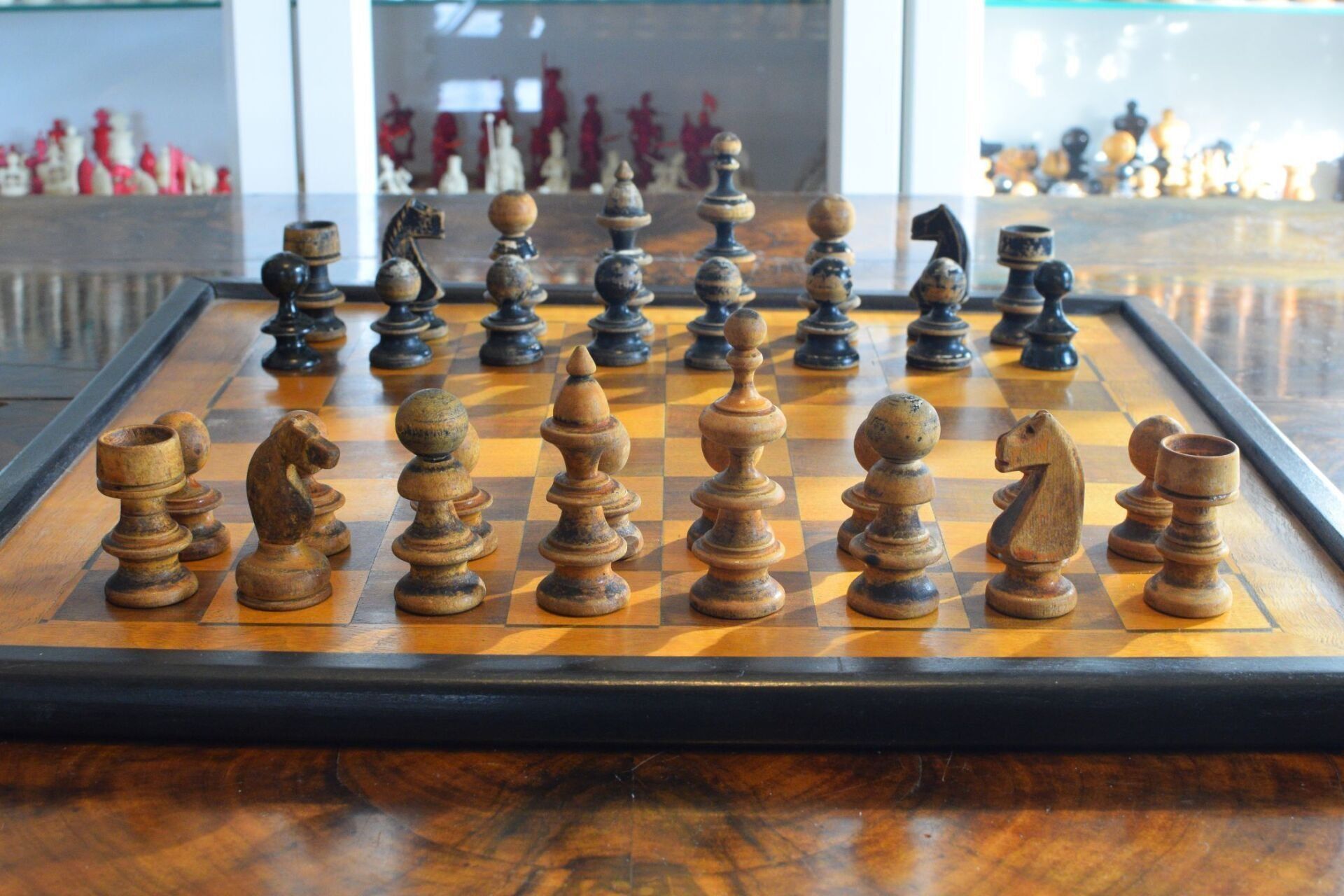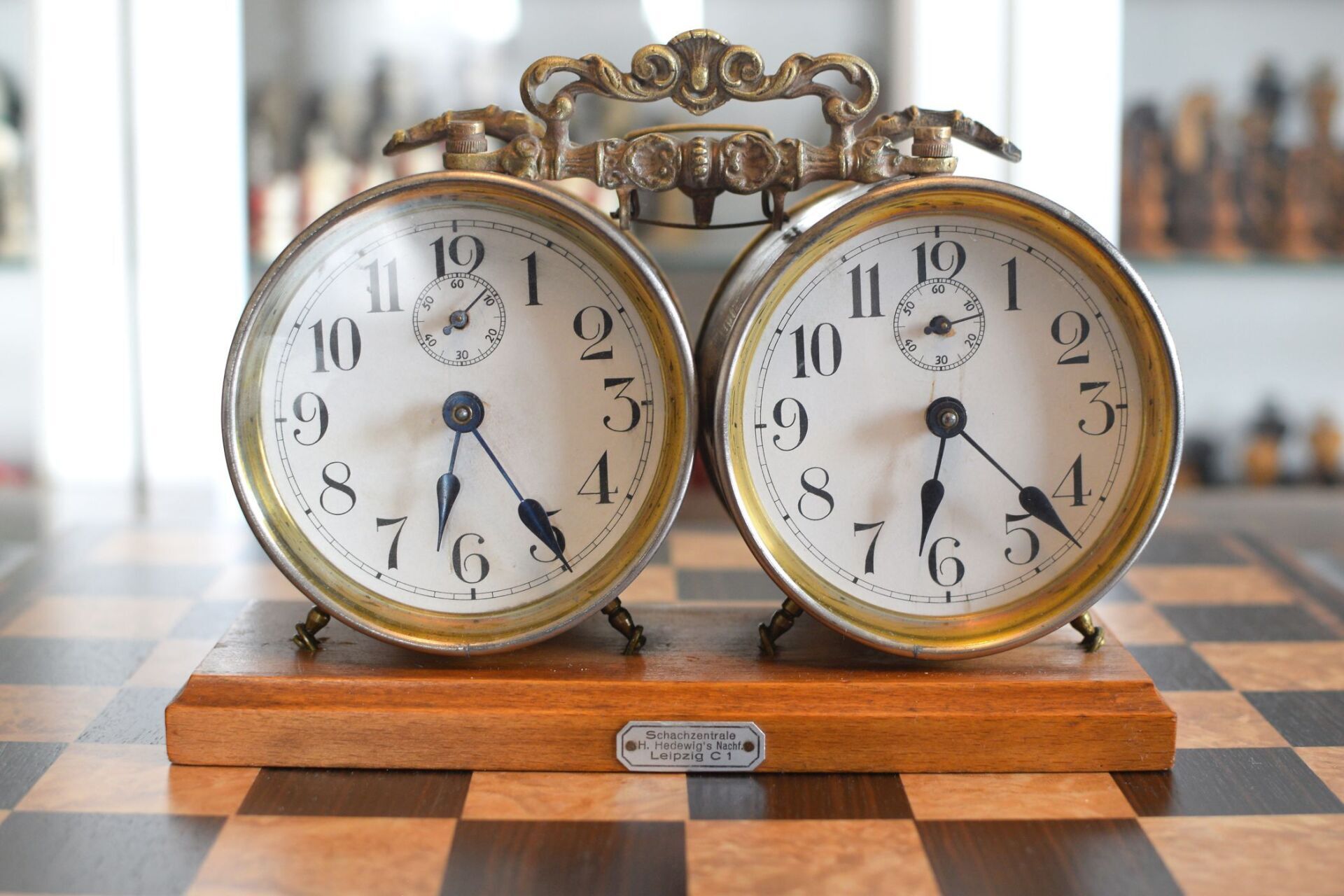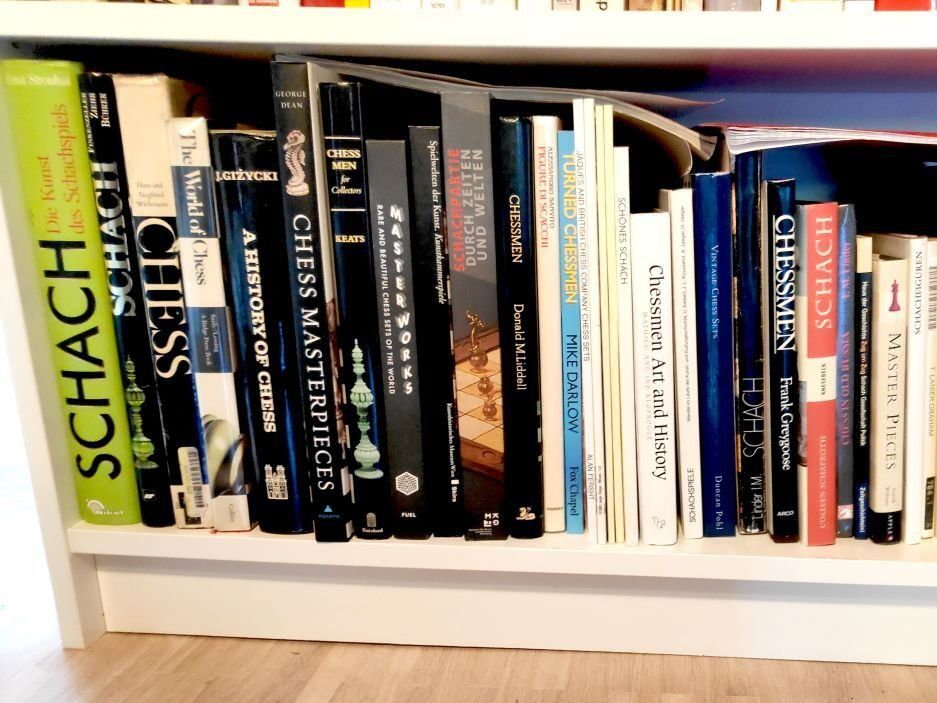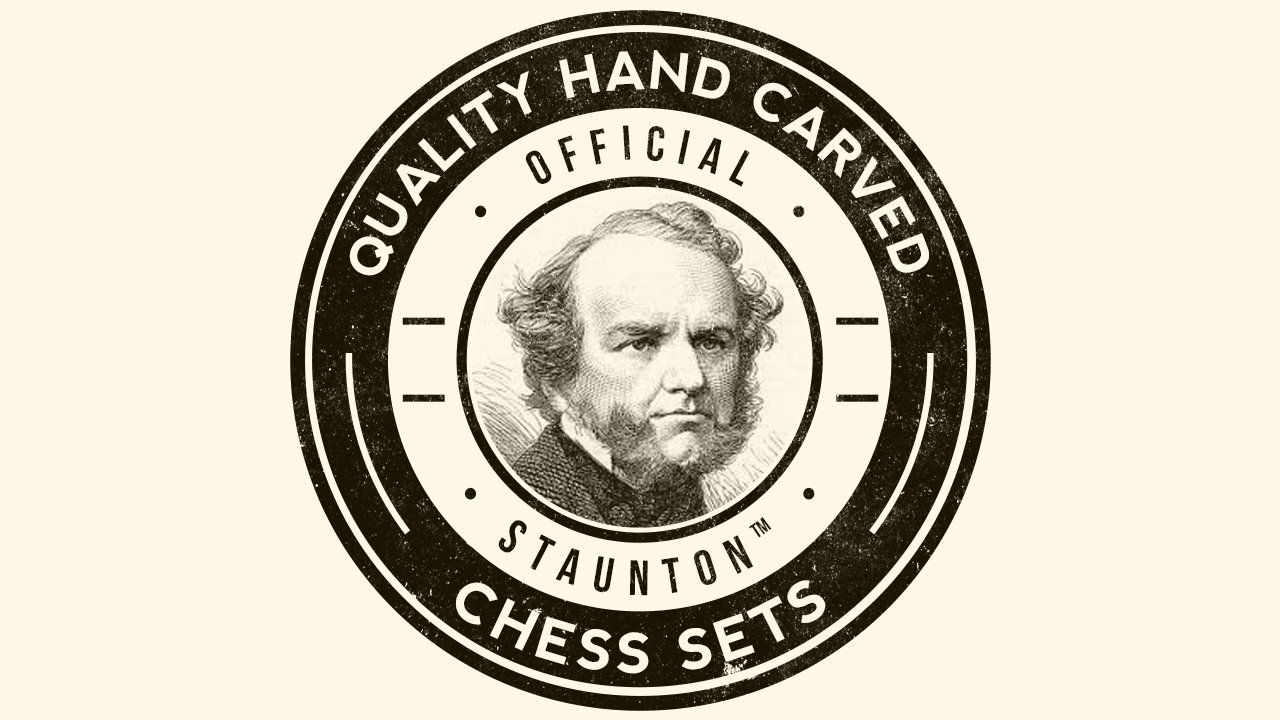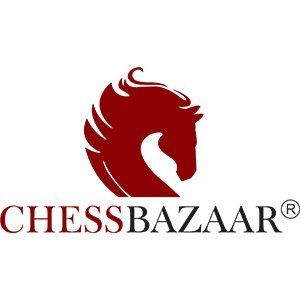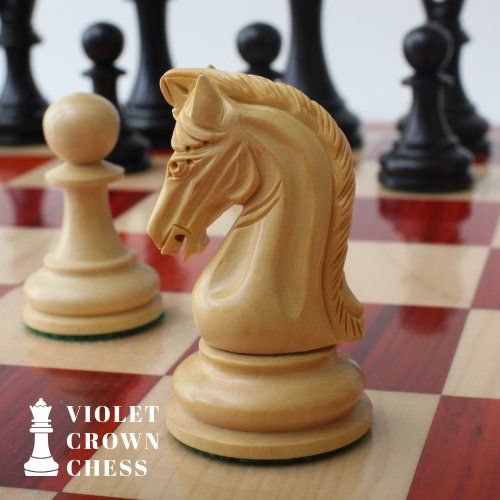Austro-Hungarian "Biedermeier" Chess Set, ca. 1840
Austro-Hungarian Chess Set made from boxwood, one side ebonised, the other left natural. Kings with elongated bodies and double galleries, Queens in the same style, but with single galleries. Kings and Queens with knob finials in opposite colours. Rooks as turrets, Knights as finely carved horses' heads. Bishops as slim multiturned pieces with spherical heads. Each of the Bishops' heads has a small hole, which makes me believe that originally the pieces came with a feather, cap or ball finial attached to the head with an angle.
The set came in a paper box, which originally was equipped with a so called "war beaker" (Modell III from 1914-1915) with the portraits of Emperor Franz Joseph I. of Austria and Emperor Wilhelm II. of Germany. I believe, however, that the chess set is much older. The (presumably missing) Bishop finials described above, as well as the notched galleries of the royal pieces are typical design features of the Biedermeier period (ca. 1815-1848).
The rest of the pieces, i.e. the Knights, Rooks and Pawns, may be from a different set, though. They are significantly smaller than the others and have thicker and more sturdy bases. They look more like pieces from a Vienna Coffeehouse set, in this case a particular nice one, however.
I acquired the set together with a wonderful
Austro-Hungarian Marquetry Chess Board of 1920.
